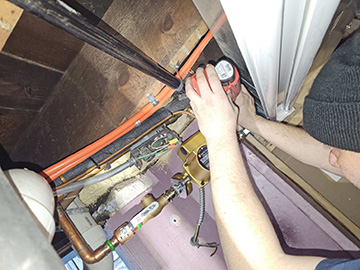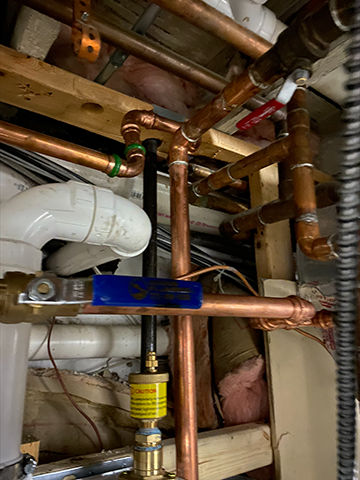How Copper Alloy Pipes and Copper Tubing is Used in Plumbing
Not that long ago, the answer to almost any question about plumbing material was either copper or iron. However, a wide range of new materials have entered the market since that point, including a variety of plastics. That being said, many homeowners still equate quality plumbing with copper alloy materials. This is partially due to the beneficial properties of copper, such as its corrosion resistance, longevity, safety, light weight, and fire resistance. In this post, we'll get into the basics of copper tubing and piping so that you'll have a place to refer clients to when they have questions.

When plumbers refer to copper plumbing, they're talking about a high-copper alloy which contains other metals. These other metals provide a range of properties to the copper, such as improving machinability, reducing expansion, and similar benefits. There are five alloys that are used in copper piping: C10200, C10300, C10800, C12000, and C12200. These are almost pure copper, with trace amounts of oxygen or phosphorus.
Copper tubing, by comparison, includes all these alloys as options as well as C10100, an alloy that can include a much wider range of trace elements, such as antimony, tellurium, silver, iron, zinc, arsenic, and lead. Though the last two especially can sound alarming, it's actually only five parts per million, most of which is encased inside the copper.
WHY DO PLUMBERS CHOOSE COPPER?
To make copper tubing, the copper is first heated to the melting point so that any impurities can be removed. It is then deoxidized to remove any flaws that may have formed during the melting process, and then cast into a cylindrical mold. Once the copper has cooled, it is drilled out in the center to create a tube. After this point, the copper is drawn through a progressive series of drawing plates to increase its length while reducing its diameter. After the copper has reached the right size, the ends of the copper tubing are squared up, the length is wrapped into a coil and the ends are plugged to prevent foreign matter from entering it.
Copper piping is available with several letter designations, which signify the difference in the pipe wall thickness. This is similar to different schedules used in PVC piping. Generally speaking, the earlier the letter appears in the alphabet, the thicker the walls will be, so Type K is usually the thickest common copper pipe you'll find, followed by L, with M being the thinnest available on the market. However, in the past, there has been Type DWV, or drain, waste, and vent, a thin pipe not designed to be used in pressurized systems, but only in drain and ventilation systems. That being said, it is no longer on the market.

The properties of copper in plumbing provide a range of benefits to homeowners. It's a durable metal, providing between 50-70 years of service before it needs to be replaced. Manufacturing copper tubing or pipe releases fewer emissions into the environment, and it can be completely recycled, making it very environmentally friendly. The light weight of the pipes makes them easy to handle and install. The pipes are fire resistant, giving you one less material to worry about during a house fire. Unlike many other types of metal pipe, copper tubing and piping doesn't contaminate the water that runs through it. Finally, copper is easy to work with, especially if you take into account the newer copper press fitting options that are available on the market that can minimize your installation time.
If you're looking for the perfect solution to connecting copper tubing and piping on your next project, Merit Brass' CopperPress® fittings and valves save time and effort on the job site. Why not take a few minutes to look around our plumbing options?
EXPLORE MERIT'S COPPERPRESS® FITTINGS & VALVES
Authors: Kimberly Wallingford, Director of Marketing and Marcus Estrella, Director of Product Line Management
SOURCES INCLUDE:
3/28/2025 12:57:53 PM